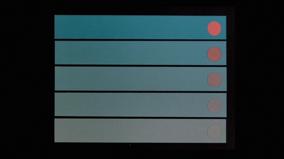New release
Coming
None
Animated Motion: Part 1
1976
9 min
Leaving soon
The first part of this series by Norman McLaren deals only with tempo. It starts by showing the disc travelling in one move (1/24 of a second) from A to B, and progressively demonstrates slower and slower tempos.

Details
The first part of this series by Norman McLaren deals only with tempo. It starts by showing the disc travelling in one move (1/24 of a second) from A to B, and progressively demonstrates slower and slower tempos.
-
directorNorman McLarenGrant Munro
-
producerNorman McLarenGrant Munro
-
cameraRaymond Dumas
-
re-recordingMichel Descombes
Education
Ages 10 to 18
School subjects

















